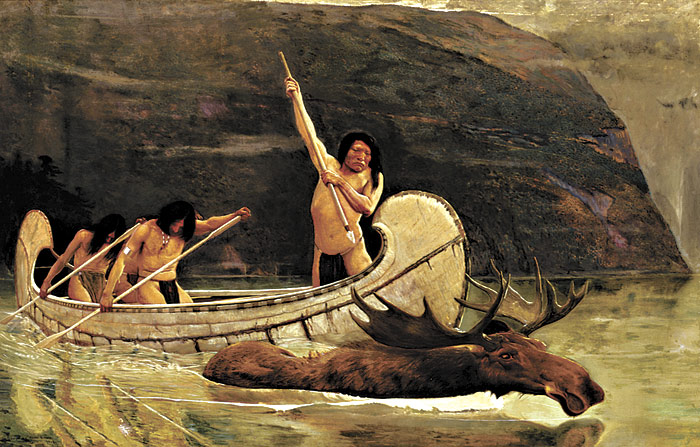George de Forest Brush (1855–1941) was a good-hearted hack, judging by “The Indian Paintings” now up at SAM. The problem isn’t that he wanted to paint the dignity and humanity of Native Americans; it’s that he was so lousy at it. Compared to Frederick Remington’s depictions of Noble Savages—which may strike us as patronizing, but at least have real drama and grandeur—Forest Brush’s figures are waxwork dummies. In The Moose Chase, a hunter wields a spear with the lifelike ferocity of a model holding a pose, while the moose’s head protrudes from the water like a studio prop poking through a hole in a sheet. Elsewhere at the museum, contemporary artist Titus Kaphar demolishes this kind of contrived white-man narrative with his sliced, diced, and tar-covered paintings in “Making History” (on view through the summer). But the art made by real Indians on display a few rooms down from “The Indian Paintings” constitutes a more compelling response. Bulging totem poles, elegant wooden utensils, delicately carved ceremonial masks: The objects in SAM’s permanent collection of Pacific Northwest tribal art have all the grace, self-assurance, and warm human presence missing from Forest Brush’s inept dioramas.
The Slutty Eye: Stiff, No Chaser
George de Forest Brush at SAM.








